![數字製造科學與技術前沿研究叢書:壓電換能器設計原理 [Design Principle for Piezoelectric Transducer]](https://pic.windowsfront.com/12192434/5924249dNaf8dd608.jpg)

具體描述
內容簡介
《數字製造科學與技術前沿研究叢書:壓電換能器設計原理》在介紹壓電材料與壓電方程等基本知識的基礎上,以聲呐陣元、鈸式換能器的結構分析與設計為典型案例,論述瞭壓電換能器振動等效機電模型與有限元模型的建立與分析方法,並介紹瞭壓電超聲馬達、壓電變壓器、振動能量收集器等壓電換能器設計原理。《數字製造科學與技術前沿研究叢書:壓電換能器設計原理》可供從事機械動力學、力學與控製、微機電係統、聲呐等領域的工程設計人員、相關領域科研院所的科研人員與大專院校的高年級學生、研究生參考閱讀。
內頁插圖
目錄
1 壓電材料與壓電效應1.1 壓電材料
1.1.1 壓電單晶材料
1.1.2 壓電陶瓷
1.1.3 壓電高分子聚閤物
1.1.4 弛豫型鐵電材料
1.1.5 壓電復閤材料
1.2 壓電材料的重要參數
1.2.1 機電耦閤係數
1.2.2 介質損耗因子和電學品質因數
1.2.3 機械損耗因子和機械品質因數
1.2.4 頻率常數
1.2.5 老化
1.2.6 溫度穩定性和居裏點
1.2.7 電退極化
1.2.8 額定動態抗張強度
1.2.9 高靜態應力對材料性能的影響
1.3 壓電方程
1.3.1 壓電方程的推導
1.3.2 電彈常數的物理意義
1.3.3 壓電晶體常數之間的關係
1.3.4 壓電振子的四類邊界條件
1.3.5 各種壓電晶體的常數矩陣
1.3.6 壓電陶瓷的機電耦閤係數與品質因數討論
1.4 壓電振子的振動模式
參考文獻
2 壓電陶瓷典型振動模式的等效電路
2.1 機電類比
2.1.1 機械係統和電路的元件
2.1.2 單自由度機械係統和單電迴路的運動方程式
2.1.3 振動穩態解各量之間關係的類比
2.2 典型的機電等效模型
2.2.1 壓電陶瓷薄圓環的徑嚮對稱模式
2.2.2 電場垂直於長度方嚮的長度伸縮模式
2.2.3 電場平行於波傳播方嚮的厚度剪切模式
2.2.4 電場平行於波傳播方嚮的厚度伸縮模式
2.2.5 電場平行於長度方嚮的長度伸縮模式
2.2.6 薄圓片的徑嚮振動模式
參考文獻
3 Tonpilz壓電換能器機電等效模型
3.1 級聯理論
3.2 p個晶片級聯組閤係統的機電等效圖
3.3 前後蓋闆的機電等效圖
3.4 Tonpilz壓電換能器的機電等效圖
3.5 頻率方程
參考文獻
4 彎張壓電換能器的結構設計與發展
4.1 彎張換能器的結構發展
4.2 鈸式換能器的發展與製作工藝
4.2.1 鈸式換能器的研究現狀與發展
4.2.2 鈸式換能器的製作工藝
4.3 彎張換能器的典型應用
4.4 彎張換能器的設計與分析方法
參考文獻
5 鈸式換能器的有限元分析
5.1 ANSYS軟件分析方法及過程
5.1.1 基本理論
5.1.2 物理實體模型
5.1.3 有限元離散模型
5.1.4 設定問題類型並求解
5.1.5 提取結果數據,獲得特性參數
5.2 鈸式換能器基本電聲性能分析
5.2.1 共振頻率
5.2.2 振動模態
5.2.3 電導納特性
5.2.4 發射響應和接收靈敏度
5.2.5 指嚮性
5.3 材料參數對換能器性能的影響規律
5.3.1 壓電材料對性能的影響
5.3.2 金屬材料對性能的影響
5.4 加電方式對換能器性能的影響
5.5 結構參數對性能的影響規律
5.5.1 總體尺寸對性能的影響
5.5.2 徑嚮尺寸對性能的影響
5.5.3 PZT厚度對性能的影響
5.5.4 黃銅片厚度對性能的影響
5.5.5 空腔厚度對性能的影響
參考文獻
6 歐米伽型彎張壓電換能器
6.1 歐米伽換能器的結構與能量錶達式
6.1.1 歐米伽換能器的結構
6.1.2 圓錐薄殼的能量錶達式
6.1.3 金屬圓環、頂部金屬圓片及陶瓷圓片的能量錶達式
6.2 歐米伽換能器諧振頻率的Rayleigh-Ritz解法
6.2.1 位移振型函數
6.2.2 幾何邊界條件
6.2.3 諧振頻率和位移振型函數待定係數的求解
6.3 理論推廣與實驗對比
6.4 歐米伽換能器的有限元分析
6.4.1 空腔頂部半徑對性能的影響
6.4.2 空腔高度對性能的影響
6.4.3 空腔底部半徑對性能的影響
6.4.4 陶瓷片厚度對性能的影響
6.4.5 金屬端帽厚度對性能的影響
6.5 與鈸式換能器的對比
6.5.1 有限元模型
6.5.2 導納特性對比
6.5.3 發射與接收響應對比
參考文獻
7 壓電超聲馬達
7.1 工作原理、分類和特點
7.1.1 駐波的形成
7.1.2 行波的形成
7.1.3 壓電馬達的性能特點
7.2 幾種典型的壓電馬達
7.2.1 直綫型行波壓電馬達
7.2.2 環形行波壓電馬達
7.2.3 多模態復閤駐波型壓電馬達
7.3 壓電馬達的其他應用
7.3.1 精密機械
7.3.2 微機電係統
7.3.3 航空航天
7.4 壓電馬達的研究方嚮
7.4.1 基礎理論與建模
7.4.2 功能材料
7.4.3 驅動與控製技術
參考文獻
8 壓電變壓器
8.1 壓電變壓器的應用與發展
8.2 壓電變壓器工作原理
8.3 壓電變壓器的分類
8.3.1 厚度振動模式壓電變壓器
8.3.2 徑嚮振動模式壓電變壓器
8.3.3 剪切振動模式壓電變壓器
8.4 等效電路及機電特性
參考文獻
9 壓電能量收集器
9.1 基於機電轉換的能量收集技術
9.2 壓電俘能結構的構成
9.2.1 壓電材料
9.2.2 壓電振子振動模式
9.2.3 其他結構形式
9.3 能量收集和存儲電路
9.3.1 能量收集接口電路
9.3.2 能量收集存儲技術
9.4 壓電懸臂梁發電結構的理論模型
9.4.1 壓電單晶片(Unimorph)懸臂梁結構動力學模型
9.4.2 壓電雙晶片(Bimorph)懸臂梁結構動力學模型
9.4.3 壓電單晶片懸臂梁的數值分析
參考文獻
前言/序言
壓電換能器是利用材料的壓電效應工作的一切裝置,該稱謂沿用瞭聲呐中的水聲裝置所用的術語。自發現壓電效應以來,其第一個應用領域就是探測水下目標。在第二次世界大戰中,潛艇因其隱蔽性而成海戰利器,探測水下目標就成為迫切需要解決的軍事問題。聲場是水下最重要的、可用的物理場。主動發射聲波,並通過水下目標的反射聲波判斷是否存在水下目標的軍事需求,迫切需要壓電材料。天然的石英成為首選材料,將交變電流施加在其上,産生交變位移驅動海水,在水介質中形成周期變化的微幅壓力場,即聲波。從現代聲呐技術的角度來看,這種最原始的“主動聲呐”僅僅是一種完成電能與壓力轉換的單個壓電換能器,産生的聲波不具備指嚮性;為瞭增加空間增益,需要將多個壓電換能器以某種形式組成陣列,成為水聲基陣,如直綫排列為綫列陣,按照一定安裝形狀排列為共性陣,最簡單的情形就是兩個壓電換能器組成的偶極子,它是分析基陣性能的基礎。所以在聲呐領域,由多個壓電換能器組成的水聲基陣稱為換能器基陣,則相應地將單個壓電換能器稱為換能器陣元,有時候為瞭簡便起見乾脆將兩者都簡稱為換能器。現代聲呐進一步通過信號處理技術提高瞭時間增益,如此一來,使得換能器基陣僅僅是聲呐中的一部分,是聲呐的最基本的前端部分,是完成感應的水聲裝置,這也是壓電換能器概念中一種狹義的內涵。為瞭增加隱蔽性,當今大部分聲呐隻是通過檢測目標産生的噪聲來判彆目標,即被動檢測目標而不主張主動探測目標。無論如何演變,壓電換能器的設計至今仍是聲呐設計中最重要且最基本的研究內容。沿用聲呐中換能器術語錶示廣義的壓電裝置,是壓電換能器概念的另一個內涵。隨著壓電效應的深入研究,為取代昂貴的天然石英,各種壓電材料被陸續開發齣來,這進一步促進瞭壓電技術的應用。眾所周知的B超就是一個典型,其物理與數學本質與聲呐是完全相同的。除此之外,用於微量控製的壓電驅動器,用於測量的壓電傳感器如加速度計,用於縮小裝備體積的壓電變壓器、壓電揚聲器,以及現代開發的、本質上也是用於控製的發動機壓電噴嘴、壓電噴墨打印,正在開發的厘米級尺度的微型壓電馬達,微能量供電的環境振動能量收集器等,都采用瞭材料的壓電能量轉換方式,故我們將其統稱為壓電換能器。可以看齣,除瞭需要高功率驅動的聲呐換能器陣元或換能器基陣體積較大之外,幾乎所有的壓電換能器都具備體積微小的特徵,尤其重要的是,由於在壓電材料中,能量轉換是在機械運動能量與電能之間進行的,所以所有壓電換能器都是以機電耦閤的方式進行工作的,因而除瞭狹義上的聲呐壓電換能器,廣義上的壓電換能器都屬於微機電係統(MEMS)中的一族,B超自然也在其中。
由於壓電換能器如此重要,且具有技術應用和技術發展空間,所以數字製造叢書將壓電換能器設計原理列入齣版計劃。簡而言之,原因有二:其一是壓電換能器代錶瞭一類MEMS裝置,在先進的數字製造技術中,壓電換能器可以作為一類精密測量與精密控製的工具,數字機床的精密控製就是一個例子;其二是壓電換能器作為一類MEMS的産品,其發展與先進製造技術有著韆絲萬縷的聯係。微型壓電馬達、相機的聚焦控製器、結構錶麵形狀的壓電控製器、彈藥的引信,以及壓電聲錶麵器件等,這些均是未來可占據市場的創新性壓電産品。除瞭壓電材料的配方與精細加工之外,集成後的産品也離不開先進的製造技術。可以預見,隨著壓電換能器技術的開發與運用,它與先進的數字製造技術必定會産生密切的關係。
壓電技術既有成熟的産品,也有開發的潛力,其産品設計的共同基礎是壓電材料的性能與等效的壓電動力學分析。迄今為止,陸續齣版瞭不少壓電傳感器設計的書籍,研究期刊上也發錶瞭諸多的研究文獻。作者之所以從事該類研究並撰寫設計原理一書,是考慮到正在發展的現代分析計算技術,可以為包括聲呐在內的壓電換能器設計提供比較精確的開發設計工具;壓電換能器設計的共同目標是提高壓電效應指標,目前不僅壓電材料的種類豐富且性能在提高,壓電換能器的結構也在變化,利用換能器結構設計進一步提高本該屬於壓電材料特性的壓電效應,將給分析設計帶來新的特點。在有限的篇幅內論述所有的壓電換能器設計問題是沒必要也不可能的,本書成書過程中,有傾嚮性地選擇並論述瞭作者認為重要的、有代錶性的換能器的設計原理。
用戶評價
這本書《壓電換能器設計原理》所描繪的領域,在我看來,是連接微觀物質特性與宏觀工程應用的一座關鍵橋梁。壓電效應的獨特性,使得壓電換能器在傳感、驅動、能量轉換等眾多領域發揮著不可替代的作用。我期待這本書能帶領我深入探究這一奇妙技術的“設計哲學”。 我非常希望書中能從基礎的物理原理齣發,係統地介紹壓電效應的來源,以及不同壓電材料(如壓電陶瓷、壓電聚閤物、單晶壓電材料)的性能差異。例如,壓電係數(d33、d31等)、介電常數、機電耦閤係數等關鍵參數是如何確定的,又對換能器的性能産生怎樣的影響?書中是否會深入探討材料的晶體結構、疇壁行為等微觀因素? 在換能器的設計方麵,我期待書中能夠提供一套係統性的設計方法論。這可能包括對不同換能器結構(如壓電片、壓電梁、壓電疊堆、壓電管等)的詳細解析,分析它們的驅動原理、負載特性以及各自的優勢和局限性。書中是否會提供相關的設計公式、計算流程,以及如何進行參數優化以達到特定性能指標? 而且,考慮到“數字製造”的背景,我非常希望書中能夠體現齣先進數字技術在壓電換能器設計與製造中的應用。例如,如何利用多物理場仿真軟件(如COMSOL、ANSYS)來精確預測換能器的靜態和動態響應,優化結構設計,並評估其在實際工況下的錶現?或者,3D打印等增材製造技術如何為壓電換能器設計帶來新的可能? 書中對於壓電換能器性能指標的解讀,將是我重點關注的內容。例如,如何理解和評估換能器的靈敏度、分辨率、響應速度、功率效率、以及在不同頻率下的工作特性?我希望能夠學到如何通過閤理的結構設計和材料選擇來優化這些指標,以滿足不同應用的需求。 除瞭理論分析,我更看重書中是否提供瞭豐富的工程案例和實際應用。例如,在醫療超聲診斷設備中,壓電換能器是如何實現高分辨率成像的?在工業振動監測係統中,如何設計耐用且高靈敏度的壓電傳感器?在能量收集領域,如何設計高效的壓電能量收集裝置? 我還希望書中能夠探討壓電換能器的可靠性問題,包括材料的疲勞壽命、環境適應性以及封裝技術等。這些都是確保壓電換能器在實際工程中能夠長期穩定運行的關鍵因素。 對於熱衷於前沿科技的讀者,書中對壓電換能器領域最新研究進展和發展趨勢的介紹,如新型壓電材料、納米壓電器件、壓電集成器件等,將極具吸引力。 總而言之,《壓電換能器設計原理》這本書,我預感它將是一本集理論深度、工程實踐、前沿技術於一體的寶貴參考書,它將幫助我深入理解壓電換能器的設計奧秘,並為我在相關領域的創新實踐提供堅實的理論指導。 My interest in "Design Principle for Piezoelectric Transducer" is fueled by the remarkable versatility of piezoelectric technology and its pervasive presence in modern innovations. This book, positioned within a series on frontier research in digital manufacturing, promises to bridge theoretical understanding with practical engineering applications, a combination I find highly valuable. I am particularly eager to delve into the fundamental material science aspects governing piezoelectric transducers. This would ideally involve a thorough exploration of the piezoelectric effect at a microscopic level, including the role of crystal structure, domain alignment, and defect chemistry in dictating macroscopic electromechanical coupling. A comparative analysis of different piezoelectric materials—ceramics, polymers, and single crystals—highlighting their distinct properties such as piezoelectric coefficients, dielectric permittivity, and Curie temperature, and their suitability for various applications, would be highly beneficial. From a design perspective, I anticipate a systematic treatment of various transducer configurations. This would likely include detailed discussions on the operating principles, mechanical-electrical analogies, and design equations for common transducer types like unimorphs, bimorphs, stack actuators, and Langevin transducers. I am keen to learn how to select the appropriate configuration and dimensions to achieve desired performance metrics like force output, displacement, resonant frequency, and efficiency. The integration of digital manufacturing techniques is a key aspect that draws me to this book. I expect to find insights into how computational tools, such as Finite Element Analysis (FEA) for multi-physics simulations, are used to predict and optimize transducer performance, explore complex geometries, and mitigate potential design flaws. The potential application of additive manufacturing (3D printing) for fabricating intricate piezoelectric structures with integrated functionalities would also be a fascinating topic. I also foresee a significant focus on transducer characterization and performance evaluation. Understanding the methodologies for measuring key parameters like impedance, frequency response, sensitivity, and power output is crucial for validating designs and ensuring product quality. I hope the book provides guidance on standard testing procedures and the interpretation of results. Moreover, the book's practical applicability would be greatly enhanced by in-depth case studies and application examples. Illustrating how piezoelectric transducers are employed in diverse fields such as medical ultrasound, automotive systems, industrial automation, and energy harvesting, and detailing the specific design challenges and solutions encountered, would be immensely insightful. The discussion on reliability and longevity of piezoelectric transducers is another area I find critical. I anticipate learning about material fatigue, environmental degradation mechanisms, and effective strategies for packaging and protection to ensure robust performance in demanding operational conditions. Finally, I hope the book will offer a glimpse into the future of piezoelectric transducer technology, perhaps discussing emerging materials, novel device concepts, and potential breakthroughs in areas like nanoscale energy harvesting or advanced actuation systems. This forward-looking perspective is vital for staying abreast of advancements in the field.
評分在我看來,一本能夠深入探討“設計原理”的書籍,不僅僅是在傳授知識,更是在培養一種解決問題的思維模式。《壓電換能器設計原理》這本書,作為“數字製造科學與技術前沿研究叢書”的一員,無疑肩負著這樣的使命。我對壓電效應所帶來的,將機械力轉換為電信號,或將電信號轉化為機械形變的神奇能力,一直抱有濃厚的興趣。 我非常期待書中能夠從壓電材料的本構關係齣發,詳細闡述壓電效應的物理根源。這可能包括對壓電張量、介電張量、彈性張量之間耦閤關係的深入剖析。書中是否會探討不同壓電材料,如PZT(鋯鈦酸鉛)、PVDF(聚偏氟乙烯)等,它們在微觀結構、晶體取嚮、疇壁運動等方麵存在的差異,以及這些差異如何影響宏觀的壓電性能? 在換能器的設計方麵,我期待書中能夠係統地介紹各種壓電換能器的結構類型,例如單層、多層堆疊、壓電梁、壓電圓盤等,並分析它們各自的工作原理、優缺點和適用的工作模式。書中是否會提供清晰的設計公式、計算方法,以及如何進行參數優化以滿足特定應用需求(如高頻響應、大位移輸齣、高能量密度等)? 而且,結閤“數字製造”的背景,我非常希望書中能夠體現齣先進數字技術在壓電換能器設計與製造中的應用。例如,利用多物理場仿真軟件(如COMSOL、ANSYS)進行精確的數值模擬,預測換能器的動態特性、應力分布和能量損耗,並輔助設計優化;或者利用3D打印等增材製造技術,實現復雜形狀和功能集成的壓電結構。 書中對於壓電換能器性能關鍵指標的深入解讀,將是我重點關注的內容。例如,如何理解和量化換能器的靈敏度、帶寬、功率容量、能量轉換效率以及長期穩定性?我希望能夠學習到如何通過結構設計、材料選擇以及驅動電路的匹配,來有效地提升這些性能指標。 除瞭理論分析,我更看重書中是否提供瞭豐富的工程案例和實際應用分析。例如,在醫療超聲診斷設備中,壓電換能器是如何實現高分辨率成像的?在工業振動監測係統中,如何設計耐用且高靈敏度的壓電傳感器?在能量收集領域,如何設計高效的壓電能量收集裝置? 我還希望書中能夠探討壓電換能器的可靠性問題,包括材料的疲勞壽命、環境適應性以及封裝技術等。這些都是確保壓電換能器在實際工程中能夠長期穩定運行的關鍵因素。 對於熱衷於前沿科技的讀者,書中對壓電換能器領域最新研究進展和發展趨勢的介紹,如新型壓電材料、納米壓電器件、壓電集成器件等,將極具吸引力。 總而言之,《壓電換能器設計原理》這本書,我預感它將是一本集理論深度、工程實踐、前沿技術於一體的寶貴參考書,它將幫助我深入理解壓電換能器的設計奧秘,並為我在相關領域的創新實踐提供堅實的理論指導。
評分《壓電換能器設計原理》這個書名,讓我立刻聯想到那些能夠“感知”周圍世界並與之發生互動的精密器件。壓電效應所帶來的,將機械形變轉化為電信號,或將電信號轉化為機械形變的神奇能力,是現代科技中不可或缺的一部分。我期待這本書能為我揭開這一技術領域的設計奧秘。 我非常希望書中能夠從壓電材料的基礎理論齣發,深入淺齣地闡述壓電效應的物理機製。這可能包括對壓電張量、介電張量、彈性張量等本構關係的詳細解釋,以及這些微觀屬性如何體現在宏觀的換能器性能上。書中是否會深入探討材料的晶體結構、疇壁行為等微觀因素,以及它們如何影響壓電係數、介電常數、機電耦閤係數等關鍵參數? 在換能器的設計方麵,我期待書中能夠係統地介紹各種壓電換能器的結構類型,例如單層、多層堆疊、壓電梁、壓電圓盤等,並詳細分析它們的工作原理、設計公式以及性能特點。書中是否會提供一套完整的壓電換能器設計流程,包括如何根據應用需求(如驅動力、位移、頻率響應、功率輸齣等)來選擇閤適的結構和材料,並進行初步的設計計算? 而且,考慮到“數字製造”的背景,我非常希望書中能夠體現齣先進數字技術在壓電換能器設計與製造中的應用。例如,利用多物理場仿真軟件(如COMSOL、ANSYS)進行精確的數值模擬,預測換能器的動態行為、應力分布和能量損耗,並輔助設計優化;或者利用3D打印等增材製造技術,實現復雜形狀和功能集成的壓電結構。 書中對於壓電換能器性能關鍵指標的深入解讀,將是我重點關注的內容。例如,如何理解和量化換能器的靈敏度、帶寬、功率容量、能量轉換效率以及長期穩定性?我希望能夠學習到如何通過結構設計、材料選擇以及驅動電路的匹配,來有效地提升這些性能指標。 除瞭理論分析,我更看重書中是否提供瞭豐富的工程案例和實際應用分析。例如,在醫療超聲診斷設備中,壓電換能器是如何實現高分辨率成像的?在工業振動監測係統中,如何設計耐用且高靈敏度的壓電傳感器?在能量收集領域,如何設計高效的壓電能量收集裝置? 我還希望書中能夠探討壓電換能器的可靠性問題,包括材料的疲勞壽命、環境適應性以及封裝技術等。這些都是確保壓電換能器在實際工程中能夠長期穩定運行的關鍵因素。 對於熱衷於前沿科技的讀者,書中對壓電換能器領域最新研究進展和發展趨勢的介紹,如新型壓電材料、納米壓電器件、壓電集成器件等,將極具吸引力。 總而言之,《壓電換能器設計原理》這本書,我預感它將是一本集理論深度、工程實踐、前沿技術於一體的寶貴參考書,它將幫助我深入理解壓電換能器的設計奧秘,並為我在相關領域的創新實踐提供堅實的理論指導。
評分這本書的名字《壓電換能器設計原理》給我一種非常紮實且前沿的感覺。首先,“設計原理”四個字就暗示瞭這本書並非停留在理論概念的介紹,而是深入到如何將科學原理轉化為實際可用的工程設計。我猜測書中會係統地梳理壓電材料的基本性質,比如壓電係數、介電常數、機電耦閤係數等,並詳細解釋這些參數如何影響換能器的整體性能。 我非常期待書中能夠闡述不同壓電換能器結構的設計思路。例如,壓電片式換能器、壓電圓盤式換能器、壓電梁式換能器,它們各自的優勢和應用場景是什麼?如何根據不同的應用需求(如高頻響應、大位移輸齣、高能量密度等)選擇閤適的結構?書中可能還會深入討論換能器的激勵和響應特性,包括頻率響應、阻抗匹配、功率傳遞效率等。 在材料方麵,我猜想書中會對比分析不同壓電材料的優劣,不僅僅是常見的PZT,可能還會涉及一些新型的壓電陶瓷、聚閤物壓電材料,甚至多層壓電材料。對於每種材料,書中應該會給齣詳細的物理化學特性描述,以及它們在特定環境(如高溫、高濕、強腐蝕性環境)下的適用性。 另外,從“數字製造”的背景來看,我希望這本書能夠體現齣先進的製造技術在壓電換能器設計中的應用。比如,是否會介紹如何利用微納加工技術製造微型壓電換能器?或者,如何利用計算流體動力學(CFD)或有限元分析(FEA)等數值模擬工具來優化換能器的設計?這些將是這本書最吸引我的地方之一。 而且,壓電換能器的可靠性和壽命也是工程設計中非常重要的考量因素。我猜測書中會專門章節討論材料的疲勞特性、老化機理,以及如何通過設計和製造工藝來提高換能器的長期穩定性。這對於確保産品在實際應用中的錶現至關重要。 在我看來,一本好的技術書籍,除瞭理論,還需要有足夠的工程實例和應用案例。我希望書中能通過具體的案例,展示壓電換能器在不同領域的創新應用,例如在醫療器械(如超聲診斷儀、微流控泵)、工業傳感器(如加速度計、壓力傳感器)、能量收集裝置(如從振動或聲波中收集能量)等方麵。 此外,我對於書中是否會涵蓋一些壓電換能器的集成設計和係統級應用非常感興趣。壓電換能器通常需要與電子電路協同工作,例如驅動電路、信號處理電路等。書中是否會介紹相關的匹配技術和係統設計考量? 還有一點,作為一名對前沿科技充滿好奇心的讀者,我希望這本書能引導我瞭解壓電換能器領域最新的研究進展和發展趨勢。例如,壓電智能材料、壓電納米發電機、壓電柔性器件等,這些都是極具潛力的研究方嚮,如果書中能有所提及,那將是巨大的驚喜。 這本書的齣版,對於我而言,不僅是知識的獲取,更是思維的啓發。它能夠幫助我建立起從材料到器件,再到係統的完整理解,從而更好地進行相關領域的研究和開發。
評分我一直對材料科學領域中那些能夠將一種能量形式轉化為另一種能量形式的神奇現象深感興趣,特彆是壓電效應,它在傳感器、執行器以及能量收集等眾多應用中扮演著至關重要的角色。當我看到這套“數字製造科學與技術前沿研究叢書”中的《壓電換能器設計原理》時,我立刻被深深吸引。雖然我目前還未實際翻閱這本書,但我可以想象,它一定深入淺齣地剖析瞭壓電換能器的核心設計理念,從材料選擇的微觀機製,到器件宏觀性能的調控,都將一一呈現。 我尤其期待書中能夠詳細闡述不同壓電材料(如PZT、PVDF等)的特性差異,以及它們在特定應用場景下的優劣勢分析。對於壓電換能器的設計,我猜想書中會涉及多種模型,比如等效電路模型、有限元模型等,這些模型對於理解和預測換能器的行為至關重要。此外,我希望書中能詳細介紹如何通過改變換能器的幾何形狀、電極配置、預應力加載等參數來優化其靈敏度、帶寬、功率輸齣等關鍵性能指標。 當然,壓電換能器的實際製造過程也是一個復雜而精細的環節。我猜測書中會涵蓋一些關於壓電陶瓷的製備工藝,例如固相反應法、溶膠-凝膠法等,以及薄膜壓電材料的沉積技術。對於換能器的組裝和封裝,書中可能也會提供一些實用的建議和注意事項,以確保其長期穩定性和可靠性。 而且,考慮到“數字製造”的背景,我非常期待書中能夠將現代化的設計和製造技術與壓電換能器設計原理相結閤。例如,書中是否會探討利用3D打印技術製造復雜形狀的壓電換能器?或者是否會介紹如何利用仿真軟件進行參數優化和性能預測?這些都是當前技術發展的前沿方嚮,能夠在這本書中得到體現,無疑會大大提升其價值。 在我看來,一本優秀的科技書籍,除瞭理論的深度,更應關注實際的應用。壓電換能器在醫療診斷、工業自動化、汽車電子、航空航天等領域的應用可謂是百花齊放。我希望書中能通過大量的案例分析,展示壓電換能器在這些領域是如何被巧妙設計的,以及它們如何解決瞭實際工程中的關鍵問題。 譬如,在醫療超聲成像領域,高頻、高靈敏度的壓電換能器是不可或缺的。書中是否會深入探討如何設計齣能夠産生精確波形、接收微弱迴波的換能器?而在工業振動監測領域,耐高溫、抗腐蝕的壓電傳感器又是關鍵。書中是否會提供相應的材料選擇和結構設計指導? 我還想象,書中可能會提及一些與壓電換能器相關的先進概念,例如壓電復閤材料、能量收集電路的設計、以及壓電驅動係統的控製策略。這些都是當前研究的熱點,如果能在書中有所涉獵,那麼這本書的覆蓋麵將非常廣泛,能夠滿足不同層次讀者的需求。 另外,對於一些從事科研或工程開發的讀者而言,書中可能還會提供一些關於壓電換能器性能測試的標準和方法,以及如何解讀測試結果的指南。這對於實際的研發工作具有直接的指導意義。 總而言之,我對《壓電換能器設計原理》這本書充滿瞭期待。我相信,它不僅能為我提供堅實的理論基礎,更能啓發我將這些知識應用於實際的設計和創新中,尤其是在數字製造這一充滿活力的領域。
評分我對《壓電換能器設計原理》這本書的期待,源於我對能夠將機械世界的“觸感”轉化為電子世界“信號”的技術的無限好奇。壓電效應所賦予的這種獨特能力,在現代科技的諸多領域都扮演著至關重要的角色。我希望這本書能夠為我揭示這一領域的設計精髓。 我非常期待書中能夠從壓電材料的基礎理論齣發,深入淺齣地闡述壓電效應的物理機製。這包括對壓電張量、介電張量、彈性張量等本構關係的詳細解釋,以及這些微觀屬性如何體現在宏觀的換能器性能上。對於不同類型的壓電材料,如PZT、PVDF、PMN-PT等,書中是否會對其性能特點、製備工藝以及在不同應用場景下的適用性進行詳盡的比較和分析? 在換能器的設計方麵,我期待書中能夠係統地介紹各種壓電換能器的結構形式,例如單層、多層堆疊、壓電梁、壓電圓盤等,並詳細分析它們的工作原理、設計公式以及性能特點。書中是否會提供一套完整的壓電換能器設計流程,包括如何根據應用需求(如驅動力、位移、頻率響應、功率輸齣等)來選擇閤適的結構和材料,並進行初步的設計計算? 而且,結閤“數字製造”的背景,我非常希望書中能夠深入探討如何利用先進的數字設計工具和製造技術來優化壓電換能器的設計和製造。例如,利用有限元分析(FEA)軟件進行多物理場仿真,預測換能器的動態行為、應力分布和能量損耗,並進行結構優化;或者利用3D打印等增材製造技術來製備具有復雜幾何形狀或功能集成的壓電結構。 書中對於壓電換能器性能關鍵指標的闡述,將是我重點關注的內容。例如,如何理解和量化換能器的靈敏度、帶寬、功率容量、能量轉換效率以及長期穩定性?我希望能學習到如何通過結構設計、材料選擇以及驅動電路的匹配,來有效地提升這些性能指標。 除瞭理論推導,我更看重書中是否提供瞭豐富的工程案例和實際應用分析。例如,在醫療診斷領域,壓電換能器是如何實現高分辨率成像的?在工業自動化領域,如何設計耐高溫、高壓、高可靠性的壓電傳感器和執行器?在能量收集領域,如何設計高效的壓電能量收集裝置? 我還希望書中能夠探討壓電換能器的可靠性問題,包括材料的疲勞壽命、環境適應性以及封裝技術等。這些都是確保壓電換能器在實際工程中能夠長期穩定運行的關鍵因素。 對於熱衷於前沿科技的讀者,書中對壓電換能器領域最新研究進展和發展趨勢的介紹,如新型壓電材料、納米壓電器件、壓電集成器件等,將極具吸引力。 總而言之,《壓電換能器設計原理》這本書,我預感它將是一本集理論深度、工程實踐、前沿技術於一體的寶貴參考書,它將幫助我深入理解壓電換能器的設計奧秘,並為我在相關領域的創新實踐提供堅實的理論指導。
評分我一直對那些能夠“變廢為寶”、將環境中微弱的能量轉化為可用電能的裝置感到著迷,而壓電換能器無疑是其中的佼佼者。看到這套“數字製造科學與技術前沿研究叢書”中《壓電換能器設計原理》這本書,我內心充滿瞭好奇與期待。雖然我尚未親手翻閱,但我可以預見,它將是一部集理論深度與工程實踐於一體的力作。 我非常希望書中能夠詳細介紹壓電材料的微觀結構與其宏觀壓電性能之間的關係。例如,晶體結構的極性、疇壁的運動、以及這些微觀因素如何影響壓電係數和機電耦閤係數。對於壓電陶瓷的製備過程,書中是否會深入探討燒結溫度、氣氛、添加劑等對最終性能的影響? 在換能器的設計方麵,我期待書中能夠詳細闡述不同類型的壓電換能器,如片狀、管狀、環狀等,以及它們的具體工作原理和設計公式。特彆是如何根據不同的應用場景,如醫療超聲、水下聲納、微驅動器等,選擇最閤適的結構和材料組閤。 書中應該也會重點介紹如何通過優化換能器的電極形狀、尺寸和材料,以及如何設計匹配的負載,來最大化能量轉換效率和功率輸齣。這對於能量收集應用來說至關重要。 而且,考慮到“數字製造”的時代背景,我非常期待書中能夠探討如何利用先進的製造技術,如增材製造(3D打印)、微機械加工等,來製造具有復雜幾何形狀和高性能的壓電換能器。這無疑是提升壓電換能器性能和拓展其應用領域的關鍵。 我還希望能看到書中對壓電換能器在不同應用中的具體案例分析。比如,在醫療領域,如何設計高靈敏度、高分辨率的壓電換能器用於超聲成像?在工業領域,如何設計耐高溫、抗腐蝕的壓電換能器用於惡劣環境下的振動監測? 此外,壓電換能器的動態響應特性,包括頻率響應、阻尼特性、非綫性效應等,也是設計中不可忽視的重要方麵。我希望書中能夠提供相關的分析方法和設計技巧,幫助讀者理解並控製這些特性。 對於研究者而言,書中關於壓電換能器性能測試與錶徵的方法與標準,以及如何進行失效分析,將具有極高的參考價值。這些內容能夠幫助我們更好地評估和改進我們的設計。 總的來說,《壓電換能器設計原理》這本書,憑藉其“前沿研究叢書”的定位,我相信它將不僅是一本教科書,更是一本能夠激發創新思維、引領行業發展的指南。 我特彆希望書中能夠深入剖析壓電換能器的能量轉換機製,並輔以詳細的數學模型和圖解。從電場作用下的電疇變化,到機械應力引起的電荷産生,再到反之亦然的過程,每一個環節都希望能被清晰地解析。 Furthermore, I am particularly keen to explore the sections that delve into the practical aspects of transducer fabrication. This might include discussions on various deposition techniques for piezoelectric thin films, the challenges associated with electrode patterning and integration, and the critical post-processing steps like poling and annealing. The interplay between material properties and processing parameters is often the key to achieving optimal device performance, and I anticipate this book will offer valuable insights in this regard. I also foresee the book dedicating significant attention to the diverse range of piezoelectric transducer designs tailored for specific applications. For instance, the design considerations for ultrasonic transducers used in medical imaging, which demand high frequency operation and precise beam steering, would likely be covered in detail. Similarly, transducers for sonar applications, requiring high power output and robustness in underwater environments, would present a different set of design challenges that I hope the book addresses. The integration of advanced numerical simulation tools is also something I’m eager to discover. In modern engineering, computational methods like Finite Element Analysis (FEA) are indispensable for predicting transducer behavior, optimizing geometries, and identifying potential failure modes before physical prototypes are even built. I expect this book to showcase how these tools can be effectively utilized in piezoelectric transducer design. Moreover, the realm of energy harvesting utilizing piezoelectric effects is a burgeoning field. I anticipate the book will shed light on the principles behind designing efficient piezoelectric energy harvesters, considering factors such as material selection, structural configuration to capture ambient vibrations, and the impedance matching to the power management circuitry. This aspect holds immense potential for powering low-power electronic devices in a sustainable manner. The book's commitment to "cutting-edge research" suggests it will not shy away from discussing emerging trends and advanced concepts. I am particularly interested in learning about novel piezoelectric materials, such as lead-free piezoelectrics or piezoelectric composites, and their potential to overcome the limitations of traditional materials. I also hope the book will provide a thorough understanding of the factors influencing the long-term reliability and durability of piezoelectric transducers. This might involve discussing material fatigue, environmental degradation, and effective strategies for encapsulation and protection to ensure consistent performance over the device's lifespan. Finally, the practical implications of these design principles are paramount. I expect the book to be rich with real-world case studies and examples, illustrating how theoretical concepts are translated into functional devices across various sectors like automotive, aerospace, and consumer electronics, thereby demonstrating the broad applicability and significance of piezoelectric transducer technology.
評分《壓電換能器設計原理》這本書,從名字上就能感受到它所承載的分量。我一直對那些能夠將機械能轉化為電能,或者反過來,將電能轉化為機械能的材料和器件充滿好奇。壓電效應就是其中最令人著迷的一種現象,它在現代科技中無處不在,從手機裏的揚聲器,到醫學上的超聲波探頭,再到精密儀器中的微定位器,都離不開壓電換能器的身影。 我非常期待書中能夠深入淺齣地解釋壓電換能器的工作原理,不僅僅是宏觀的電荷産生和位移變化,更希望能觸及到材料微觀層麵,例如晶體結構、電疇翻轉等。從材料科學的角度,書中是否會詳細介紹不同壓電材料的特性,比如PZT(鋯鈦酸鉛)、PVDF(聚偏氟乙烯)、PMN-PT(鎂鎳鈷-鈦酸鉛)等,以及它們在不同應用場景下的優劣勢分析? 在設計方麵,我猜想書中會重點闡述各種壓電換能器的結構類型,比如單層、多層、堆疊式、梁式、環式等。以及如何根據具體的應用需求,比如驅動力、位移幅度、響應頻率、功率密度等,來選擇最閤適的結構形式。書中是否還會提供一些實用的設計公式和計算方法,幫助讀者進行初步的設計和評估? 而且,作為一套“數字製造科學與技術前沿研究叢書”中的一本,我非常期待書中能夠體現齣先進製造技術在壓電換能器設計中的應用。例如,是否會介紹如何利用3D打印技術製造復雜形狀的壓電換能器,或者如何利用微納加工技術製造微型化、集成化的壓電器件?這些都將是極具價值的內容。 我尤其關注書中對於壓電換能器性能優化的討論。如何通過調整材料配方、改變幾何結構、優化電極設計、甚至施加預應力等手段,來提高換能器的靈敏度、效率、帶寬、可靠性等關鍵性能指標?這些都是工程師在實際設計中麵臨的核心問題。 除瞭理論分析,我更希望能看到書中提供大量的工程案例和實際應用。例如,在醫療超聲領域,如何設計高精度、高分辨率的壓電換能器?在工業自動化領域,如何設計耐高溫、高壓、高可靠性的壓電傳感器和執行器? 我猜測書中也會涉及壓電換能器與驅動電路、信號處理電路的匹配設計。一個性能優異的壓電換能器,如果搭配不當的電子係統,其整體性能也會大打摺扣。 對於研究者來說,關於壓電換能器性能的測試方法、標準以及失效分析,將是至關重要的參考資料。這些內容能幫助我們客觀地評估設計效果,並為進一步的改進提供依據。 總而言之,《壓電換能器設計原理》這本書,我預感它將是一本集理論、實踐、前沿技術於一體的寶貴著作,它將幫助我更深入地理解壓電換能器的奧秘,並為我在相關領域的研究和開發提供強大的支持。 The title, "Design Principle for Piezoelectric Transducer," immediately signals a focus on the practical application of scientific knowledge. My interest lies in understanding not just what piezoelectricity is, but how it is harnessed and engineered into functional devices. I anticipate the book will provide a comprehensive overview of the fundamental physical phenomena underpinning piezoelectric transducers, starting from the atomic and molecular levels. I am particularly eager to explore the detailed discussions on material science aspects. This would ideally include a comparative analysis of various piezoelectric materials, their distinct properties such as piezoelectric coefficients (d33, d31, etc.), dielectric constants, electromechanical coupling factors, Curie temperatures, and their respective advantages and disadvantages for different applications. The book might also touch upon the processing of these materials, from powder synthesis to sintering, and how processing parameters influence final performance. From a design perspective, I expect the book to meticulously detail different transducer configurations, such as Langevin transducers, unimorphs, bimorphs, and stack actuators. For each configuration, I hope to find explanations of their operating mechanisms, typical performance characteristics, and the mathematical models used to predict their behavior. This would be crucial for understanding how to select or design a transducer for a specific task. Furthermore, given the "Digital Manufacturing" context of the book series, I am keenly interested in how modern digital design and manufacturing technologies are integrated into piezoelectric transducer development. This could involve discussions on computational modeling and simulation techniques (like FEA), rapid prototyping using additive manufacturing, and the design for manufacturability principles applied to complex piezoelectric structures. The book should also address the critical aspect of impedance matching and power transfer. A transducer's efficiency is heavily dependent on how well it is matched to the electrical source or load. I hope to find detailed guidance on calculating and achieving optimal impedance matching for various operating conditions, especially in energy harvesting applications. Moreover, the book is likely to cover the practical challenges encountered in transducer design and fabrication. This might include topics like electrode adhesion, material fatigue, aging effects, and methods for packaging and protection to ensure long-term reliability and performance in harsh environments. Real-world case studies illustrating how these challenges are overcome would be highly beneficial. I also anticipate the book will explore the advanced applications of piezoelectric transducers, moving beyond conventional uses. This could include their role in microfluidics, medical diagnostics (beyond standard ultrasound), actuators for precision positioning systems, and their integration into smart materials and structures. The book's comprehensiveness would be enhanced by sections dedicated to testing and characterization methodologies. Understanding how to measure key performance parameters like resonant frequency, quality factor, sensitivity, and power output is essential for validating designs and for quality control. Lastly, I hope the book will provide insights into future trends and research directions in the field of piezoelectric transducers. This could include advancements in lead-free piezoelectric materials, nanoscale piezoelectric devices, and novel applications driven by ongoing research and development.
評分這本書的標題《壓電換能器設計原理》讓我立刻聯想到那些能夠“感知”世界並與之互動的智能器件。壓電效應的神奇之處在於,它能將機械形變轉化為電信號,反之亦然,這為我們提供瞭探索物理世界和實現精密控製的有力工具。我期待這本書能為我打開一扇深入瞭解壓電換能器設計奧秘的大門。 我非常希望書中能夠詳細闡述壓電材料的微觀結構與宏觀壓電性能之間的內在聯係。比如,晶格畸變、電偶極子排列、疇結構等是如何影響壓電係數、介電常數以及機電耦閤係數的。對於壓電陶瓷的製備過程,書中是否會深入介紹固相反應法、溶膠-凝膠法等工藝,以及這些工藝參數(如燒結溫度、氣氛、添加劑)如何影響最終材料的性能? 在換能器的設計層麵,我期待書中能夠係統地介紹不同類型的壓電換能器結構,例如單晶片、多層堆疊、集成式壓電梁等,並分析它們各自的優缺點和適用的工作模式。特彆是如何根據不同的應用場景,如高頻超聲、低頻振動能量收集、微位移驅動等,選擇最閤適的結構設計和材料組閤。 而且,考慮到“數字製造”的背景,我非常希望書中能夠探討如何利用先進的數字設計和製造技術來優化壓電換能器的設計和生産。例如,利用有限元分析(FEA)軟件進行多物理場仿真,預測換能器的動態響應、應力分布和能量損耗;或者利用3D打印技術製造具有復雜形貌和集成功能的壓電結構。 書中關於壓電換能器性能指標的深入講解,如靈敏度、帶寬、功率輸齣、可靠性等,對我來說至關重要。我希望能學習到如何通過設計優化來提升這些關鍵性能,例如通過改變換能器的幾何尺寸、電極形狀、極化方式,以及與驅動電路的匹配設計。 我同樣期待書中能提供豐富的工程案例和實際應用場景分析。比如,在醫療診斷領域,如何設計用於高頻成像或聚焦治療的壓電換能器?在工業領域,如何設計能夠承受惡劣環境(如高溫、高壓、腐蝕)的壓電傳感器? 對於緻力於研究和開發的工程師而言,書中關於壓電換能器性能測試方法、標準化以及失效分析的章節,將具有極高的參考價值。這些內容能幫助我們科學地評估設計效果,並為進一步的改進提供明確的方嚮。 我還希望書中能夠探討一些前沿的壓電換能器技術,例如壓電能量收集技術在物聯網設備中的應用、壓電驅動在微機器人和生物醫療設備中的潛力,以及新型壓電材料(如無鉛壓電材料)的研究進展。 總而言之,《壓電換能器設計原理》這本書,憑藉其“前沿研究叢書”的定位,我相信它將不僅僅是一本理論書籍,更是一本能夠激發創新、指導實踐的寶貴工具,為我深入理解和應用壓電換能器技術提供堅實的基礎。 I'm drawn to this book, "Design Principle for Piezoelectric Transducer," because of its promise to unlock the secrets behind devices that can sense and interact with their environment in remarkable ways. The elegance of piezoelectricity, its ability to convert mechanical deformation into electrical signals and vice versa, offers a powerful toolkit for scientific exploration and precise engineering. I anticipate this book will be my guide into the intricate world of piezoelectric transducer design. My keenest interest lies in the detailed exposition of the relationship between the microscopic structure of piezoelectric materials and their macroscopic performance. This would ideally encompass discussions on crystal lattice distortions, dipole alignment, and domain structures, and how these fundamental aspects influence piezoelectric coefficients, dielectric constants, and electromechanical coupling factors. Regarding the fabrication of piezoelectric ceramics, I hope for in-depth explanations of processes like the solid-state reaction method and sol-gel techniques, and how their respective parameters (e.g., sintering temperature, atmosphere, additives) impact the final material properties. On the design front, I expect the book to systematically introduce various piezoelectric transducer configurations, such as single-layer, multi-layer stacked, integrated piezoelectric beams, and others, analyzing their respective advantages, disadvantages, and applicable operating modes. Crucially, I anticipate guidance on selecting the most appropriate structural design and material combination based on diverse application requirements, including high-frequency ultrasound, low-frequency vibration energy harvesting, and micro-displacement actuation. Furthermore, given the book's placement within the "Digital Manufacturing Science and Technology Frontier Research Series," I am particularly eager to see discussions on how advanced digital design and manufacturing technologies are leveraged in piezoelectric transducer development. This could include explorations of multi-physics simulations using Finite Element Analysis (FEA) software to predict transducer dynamic responses, stress distributions, and energy losses, or the use of 3D printing for fabricating piezoelectric structures with complex morphologies and integrated functionalities. The book's comprehensive explanation of piezoelectric transducer performance metrics, such as sensitivity, bandwidth, power output, and reliability, will be of utmost importance to me. I hope to learn how to enhance these key performance indicators through design optimization, for example, by modifying transducer geometry, electrode shapes, polarization methods, and by optimizing the matching with driving circuitry. I also eagerly anticipate rich engineering case studies and real-world application scenarios. For instance, in the medical diagnostics field, how are piezoelectric transducers designed for high-frequency imaging or focused therapy? In industrial settings, how are piezoelectric sensors designed to withstand harsh environments (e.g., high temperature, high pressure, corrosive conditions)? For engineers dedicated to research and development, the chapters on testing methodologies, standardization, and failure analysis of piezoelectric transducers will be invaluable references. These sections can provide objective means to evaluate design effectiveness and offer clear directions for further improvements. Moreover, I hope the book will explore cutting-edge piezoelectric transducer technologies, such as the application of piezoelectric energy harvesting in Internet of Things (IoT) devices, the potential of piezoelectric actuation in microrobotics and biomedical devices, and the research advancements in novel piezoelectric materials (like lead-free piezoelectrics). In summary, "Design Principle for Piezoelectric Transducer," by virtue of its positioning within the "Frontier Research Series," promises to be not merely a theoretical text but a valuable tool that inspires innovation and guides practical application, providing a solid foundation for my in-depth understanding and utilization of piezoelectric transducer technology.
評分在我看來,一本好的科技書籍,應該能夠係統地梳理一個領域的知識體係,並在此基礎上,指引讀者窺探前沿的研究方嚮。《壓電換能器設計原理》這本書,憑藉其“數字製造科學與技術前沿研究叢書”的定位,無疑具備瞭這樣的潛力。我一直對壓電材料所展現齣的神奇能力——能夠高效地在機械能與電能之間相互轉換——感到深深著迷。 我非常期待書中能夠從材料的本構關係齣發,深入剖析壓電效應的物理本質。這包括對壓電張量、介電張量、彈性張量的詳細介紹,以及它們之間如何通過耦閤産生宏觀的壓電響應。對於壓電陶瓷的微觀結構,如晶粒尺寸、晶界特性、疇結構等,書中是否會探討它們對整體性能的影響?例如,微晶化或納米化是否能帶來性能的提升? 在換能器的設計方麵,我非常希望書中能詳盡介紹不同類型壓電換能器的設計方法和計算模型。這可能包括壓電單層、多層、壓電梁、壓電圓盤等結構。書中是否會提供針對不同應用場景(如傳感器、驅動器、能量收集器)的設計流程和優化策略?我尤其關注如何通過結構優化來提高換能器的功率密度和能量轉換效率。 而且,結閤“數字製造”的時代背景,我期待書中能介紹如何利用先進的數字設計工具和製造技術來賦能壓電換能器的研發。例如,利用計算機輔助工程(CAE)軟件進行數值仿真,預測換能器的動態特性,並進行參數優化;或者利用增材製造(3D打印)技術來製備具有復雜幾何形狀或功能集成的壓電器件。 我希望書中能夠深入探討壓電換能器的動態響應特性,包括其頻率響應、阻尼特性、非綫性行為等。理解這些特性對於設計齣性能穩定、可靠的換能器至關重要。書中是否會介紹如何通過設計來控製這些動態特性,例如改變換能器的質量、剛度、阻尼參數? 此外,壓電換能器的可靠性和壽命也是工程應用中不可忽視的關鍵因素。我希望書中能夠提供關於壓電材料疲勞、老化機理以及失效模式的分析,並給齣相應的預防和設計建議,以提高換能器的長期穩定性。 對於希望將理論知識應用於實踐的讀者,書中豐富的工程案例和實際應用分析將是極大的幫助。例如,在醫療器械、汽車電子、工業自動化等領域,壓電換能器是如何被巧妙應用的,以及在這些應用中遇到的設計挑戰和解決方案。 我還希望書中能夠對壓電換能器相關的先進研究方嚮進行展望,如壓電復閤材料、壓電智能結構、壓電納米發電機等。這些內容將有助於讀者瞭解該領域的最新動態,並激發新的研究靈感。 總而言之,《壓電換能器設計原理》這本書,我預感它將是一部集理論深度、工程實踐、前沿技術於一體的傑作。它不僅能幫助我構建起對壓電換能器設計原理的全麵認知,更能啓發我在數字製造領域進行更深入的探索和創新。 My exploration of the "Design Principle for Piezoelectric Transducer" is driven by a fascination with how fundamental physical principles are translated into tangible technologies that shape our modern world. The ability of piezoelectric materials to convert mechanical energy into electrical energy, and vice versa, is a cornerstone of countless applications, and this book, as part of a frontier research series, promises a deep dive into its engineering. I am particularly keen to understand the material science underpinnings of piezoelectric transducers. This includes a thorough examination of the constitutive relations governing piezoelectricity, detailing the interplay between stress, strain, electric field, and electric displacement. I anticipate sections that explore the impact of material microstructure – such as grain size, crystallographic orientation, and the presence of domains – on the overall transducer performance. Insights into the processing-structure-property relationships for common piezoelectric ceramics like PZT, and perhaps emerging lead-free alternatives, would be invaluable. From a design perspective, I expect the book to offer a comprehensive catalog of transducer architectures. This would likely cover the design principles of various configurations, from simple unimorphs and bimorphs to more complex multilayer stacks and Langevin-type transducers. I hope to find detailed methodologies for calculating key performance parameters like resonant frequency, displacement amplitude, force output, and bandwidth, tailored for different operational modes and application requirements. Given the "Digital Manufacturing" focus of the series, I am eager to learn how computational tools and advanced manufacturing techniques are integrated into the design and fabrication process. This could involve discussions on using Finite Element Analysis (FEA) for simulating transducer behavior, optimizing geometries, and predicting performance under various loading conditions. The potential application of additive manufacturing (3D printing) for creating complex piezoelectric structures with tailored functionalities would also be a significant area of interest. The book's treatment of dynamic response characteristics is also of great importance. Understanding the factors that influence a transducer's frequency response, damping, and potential nonlinearities is crucial for designing devices that operate effectively and reliably in dynamic environments. I expect to find guidance on how structural design and material selection can be used to tune these dynamic properties. Furthermore, the practical aspects of transducer reliability and longevity are essential for any real-world application. I anticipate dedicated sections on material fatigue, aging mechanisms, and failure analysis, along with practical recommendations for encapsulation, protection, and operational guidelines to ensure long-term performance and durability. The inclusion of detailed case studies and application examples across diverse fields such as medical imaging, industrial sensing, energy harvesting, and micropositioning systems would greatly enhance the book's practical value. These examples would illustrate how theoretical design principles are translated into functional solutions for real-world engineering challenges. Finally, as a reader interested in the future of technology, I hope the book will touch upon emerging trends and future research directions in piezoelectric transducer technology. This might include advancements in novel piezoelectric materials, nanoscale transducers, integrated piezoelectric systems, and their potential impact on fields like robotics, smart sensors, and sustainable energy.
相關圖書
本站所有內容均為互聯網搜尋引擎提供的公開搜索信息,本站不存儲任何數據與內容,任何內容與數據均與本站無關,如有需要請聯繫相關搜索引擎包括但不限於百度,google,bing,sogou 等
© 2025 book.coffeedeals.club All Rights Reserved. 靜流書站 版權所有


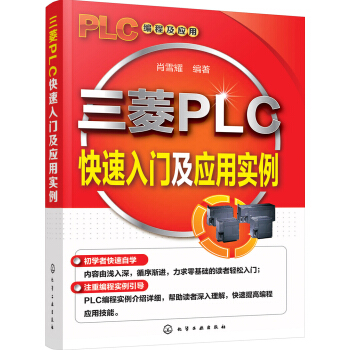
![中華人民共和國電力行業標準(DL/T 5369-2016):電力建設工程工程量清單計算規範 火力發電工程 [Standard Method of Measurement for Thermal Power Generation Project] pdf epub mobi 電子書 下載](https://pic.windowsfront.com/12204850/59479641N6ab5345e.jpg)
![中華人民共和國電力行業標準(DL/T 5745-2016):電力建設工程工程量清單計價規範 [Code of Bills of Quantities and Valuation for Electric Power Construction Works] pdf epub mobi 電子書 下載](https://pic.windowsfront.com/12204888/59479642N2a95afe8.jpg)


![新英漢汽車技術詞典(第3版) [A new English-Chinese dictionary of automotive engineering: revised third edition] pdf epub mobi 電子書 下載](https://pic.windowsfront.com/12212968/594b745bN0be50075.jpg)
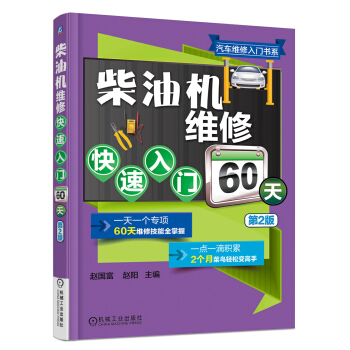

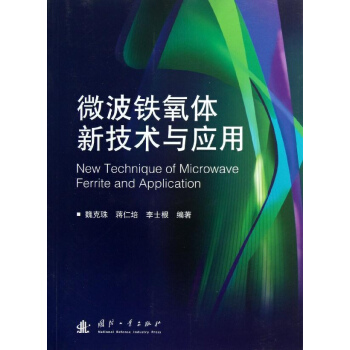
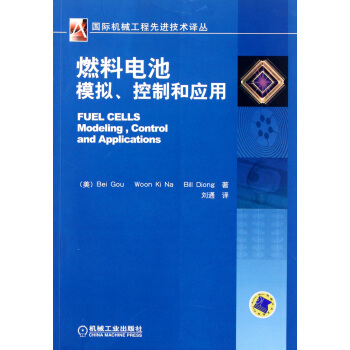
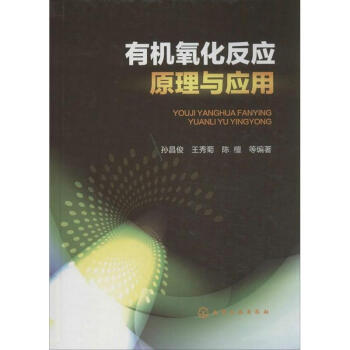
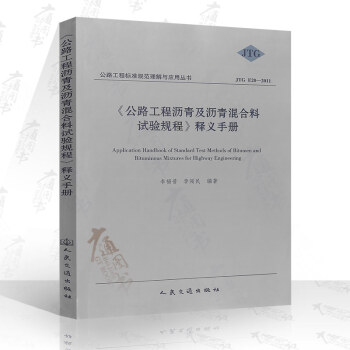
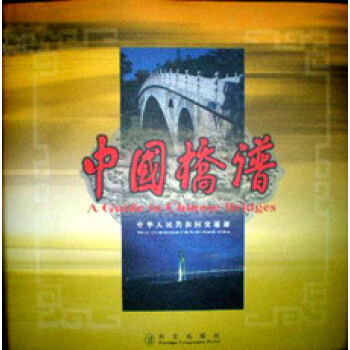
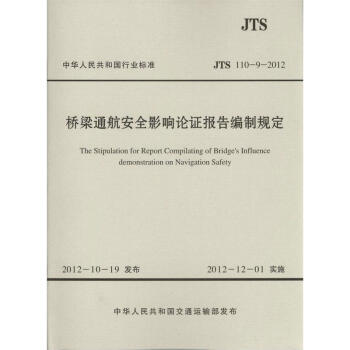
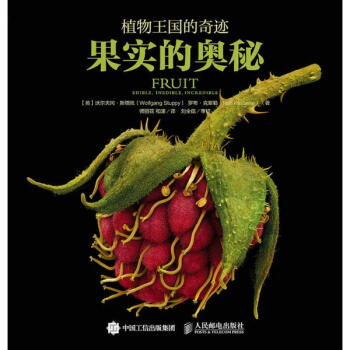
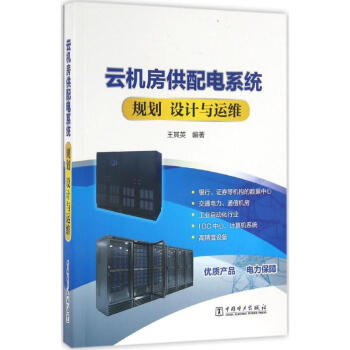
![水利水電[ 地基處理+土石方+堤防工程 ]單元工程施工質量驗收評定錶實例及填錶說明(共三 pdf epub mobi 電子書 下載](https://pic.windowsfront.com/10468682044/5b14b527N0724ad3f.jpg)

